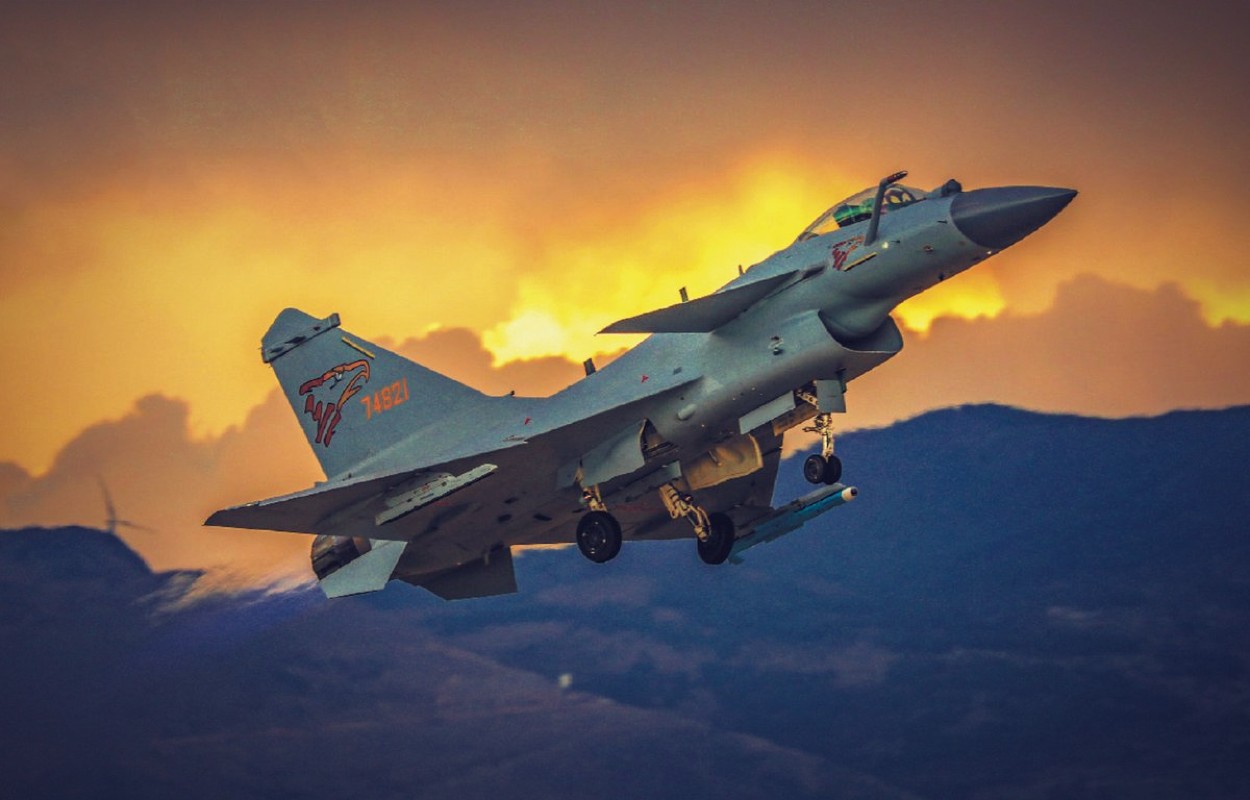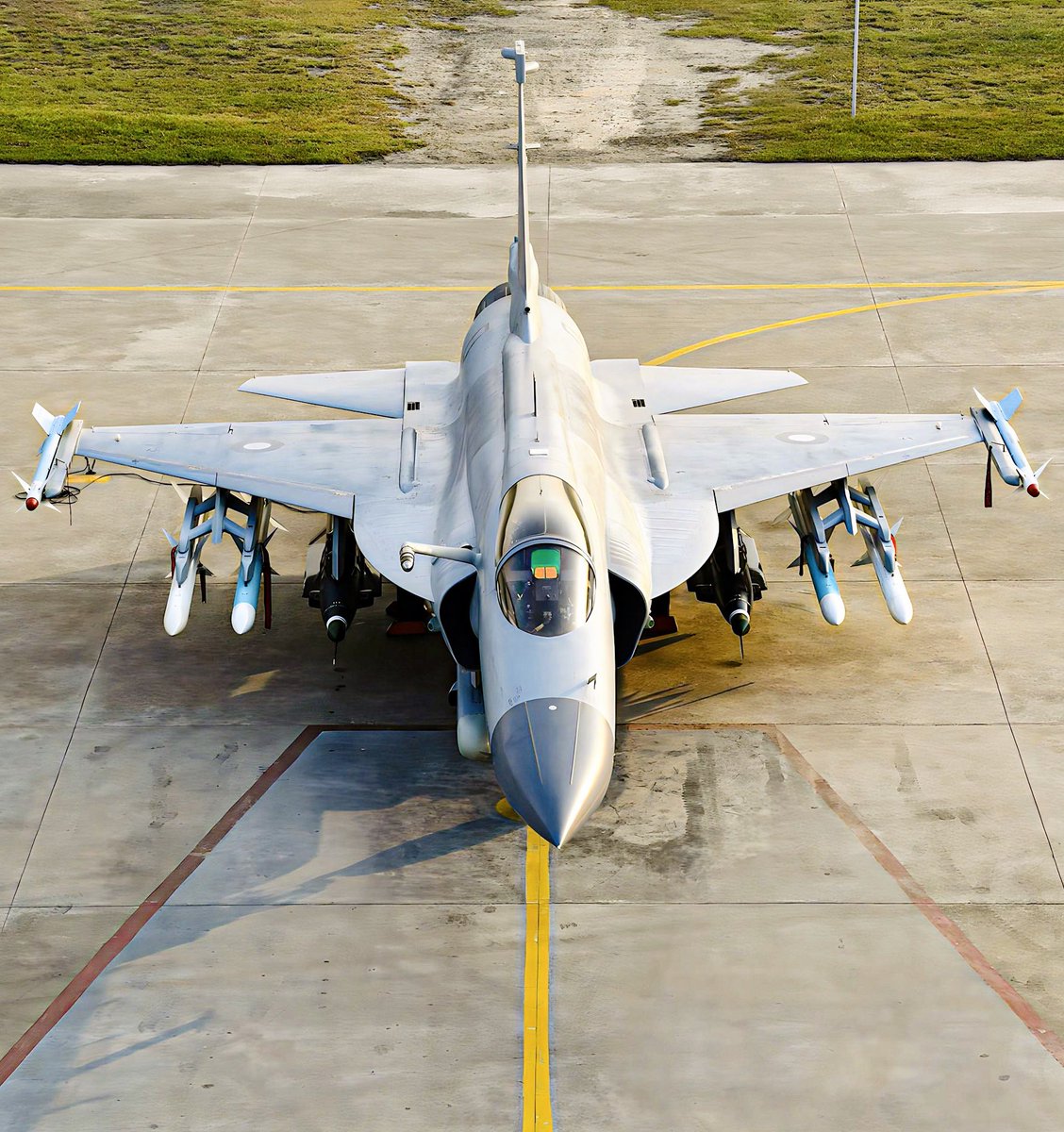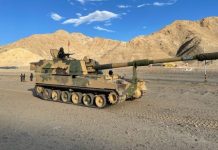Looking to modernize its aging Air Force, Bangladesh has shown interest in the JF-17 Thunder fighter jets jointly developed by Pakistan and China.
During a visit to Pakistan on January 15, a high-level defense delegation from Bangladesh showed a great deal of interest in Pakistan’s cutting-edge military hardware, especially the JF-17 Thunders, Pakistani publication Express Tribune reported.
According to Pakistan’s Inter-Services Public Relations (ISPR), the delegation, which was led by Lieutenant General SM Qamarul Hassan, Principal Staff Officer, Armed Forces Division, Bangladesh, met with Pakistan Air Force (PAF) Chief Air Chief Marshal Zaheer Ahmad Babar Sidhu at the Air Headquarters in Islamabad. Both sides discussed possible ways to improve cooperation between their air forces and strengthen military ties.
Lieutenant General Hassan praised the PAF’s state-of-the-art military and indigenously manufactured equipment. According to the report, Lieutenant General Hassan explicitly expressed interest in the JF-17 Thunder aircraft, sparking rumors about a possible purchase.
The Bangladesh Air Force (BAF) currently uses outdated aircraft like the F-7 and MiG-29, which are getting harder to maintain and use in modern combat situations.
This may be the first time that Bangladesh has expressly communicated its interest in the JF-17. Earlier, reports suggested that the South Asian nation was heavily inclined towards the Chinese J-10C 4.5th generation aircraft, which is operated only by the Chinese and Pakistani Air Forces.
On a visit to China in November 2024, Air Chief Marshal Hasan Mahmood Khan of BAF reportedly expressed Bangladesh’s desire to acquire multi-role combat aircraft and attack helicopters. At the time, media reports stated that Dhaka was contemplating a purchase of about 16 J-10C fighters from China.
However, the acquisition of the J-10C jets is believed to be fraught with challenges and risks for Bangladesh, as previously explained by Indian Air Force veteran former Air Marshal Anil Khosla, the Vice Chief of Air Staff (VCAS) in an article for the EurAsian Times.
Several experts and commentators have noted that the aircraft relies heavily on older technologies and reverse-engineered components.

“The aircraft’s performance in simulated combat scenarios, especially against more advanced jets, has not consistently proven superior. Seemingly, the J-10C struggles with issues related to its radar and avionics compared to modern, Western-made jets. The J-10C’s WS-10 engine has faced reliability issues in high-stress environments, raising concerns about its long-term performance, reliability, and maintenance. Inconsistency in after-sales service and spare parts availability would be another challenge. These risks underscore the need for a comprehensive analysis before making a decision,” Khosla argued.
At one point, Bangladesh was also assessing the possibility of acquiring a European fighter, with the Dassault Rafale and the Eurofighter Typhoon in the fray.
“Bangladesh will likely opt for a European aircraft – Eurofighter Typhoon or French Rafale. But nothing is final before the next elections,” a Bangladeshi official told the EurAsian Times in September 2023. “With Rafale being operated by the Indian Air Force, the odds of a Eurofighter Typhoon have increased,” the official added.
However, a lot has changed since. The Sheikh Hasina government’s fall has changed Dhaka’s geopolitical calculus, with the South Asian country distancing itself from its traditional ally India and evidently pursuing close ties with Pakistan and China. Though it may be too premature to say that Bangladesh’s interest in J-10C has waned, it is nonetheless intriguing that the JF-17 appears to be in the reckoning for the BAF.
Earlier, as relations with India nosedived, Dr. Shahiduzzaman, a political commentator and professor at Dhaka University, urged Bangladesh to purchase three squadrons of JF-17 fighter jets from Islamabad.
Making a case for the JF-17, Shahiduzzaman claimed that the firepower of the Pakistani fighter aircraft is comparable to that of American F-35 Lightning II aircraft.
JF-17 Could Thunder In Bangladesh
Jointly developed by the Pakistan Aeronautical Complex and China’s Chengdu Aircraft Industry Corp, the JF-17 Thunder combat aircraft has a Russian engine, a Chinese airframe, and Western avionics.
The JF-17 Thunder is a single-engine, lightweight, multi-role combat aircraft. With a maximum speed of approximately 1,200 mph and a service ceiling of 50,000 feet, the JF-17 can carry out a variety of tasks, including ground assault and aerial intercept. The aircraft has seven hardpoints and can hold over 7,000 pounds of ammo in its twin-barrel 23 mm autocannon.
The JF-17 is designed to carry Chinese weaponry on its seven hardpoints, including the LS-6 GPS-guided glide bombs, the PL-5 short-range air-to-air missile, and the YJ-12 supersonic and YJ-83 subsonic anti-shipping missiles. Although not directly integrated, the JF-17 can also be equipped with external pods that carry self-defense jammers and electro-optical/infrared sensors.
Since its induction in the PAF in 2007, the JF-17 has been upgraded several times. If Bangladesh decides to go for the JF-17, it will likely purchase the Block III variant, which comes with “superior maneuverability, extended range, and enhanced combat capabilities.”

This JF-17 Block III can be used in a variety of combat scenarios. It is capable of carrying a variety of weapons, including air-to-air and air-to-surface weapons, guided and unguided bombs, and anti-ship missiles. It has also been equipped with a PL-15 Beyond Visual Range (BVR) missile, which has a range of 300 kilometers.
Due to its lower radar cross-section, the JF-17 Block III has better stealth characteristics. The aircraft also uses more composites and has better avionics as compared to its predecessors.
It boasts an active electronically scanned array (AESA) radar. Reports state that the aircraft is equipped with the KLJ-7A airborne active electronically scanned array (AESA) fire-control radar. Additionally, the JF-17 Block III has several notable improvements, including Missile Approach Warning Systems (MAWS), an integrated electronic warfare (EW) suite, a Wide Angle Smart HUD, and additional hard points.
The aircraft has had a decent export run and has been acquired by countries like Iraq, Myanmar, Azerbaijan, and Nigeria. The aircraft can offer developing countries freedom from the strings attached to defense sales from Western countries. The fighter jet is priced between US$15 million and $25 million each, considerably cheaper than every other fourth-generation jet on the market.
While the aircraft may not be as capable as the Chinese J-10C or the Eurofighter Typhoon, it would add more teeth to BAF’s combat power.
- Contact the author at sakshi.tiwari9555 (at) gmail.com
- Follow EurAsian Times on Google News




